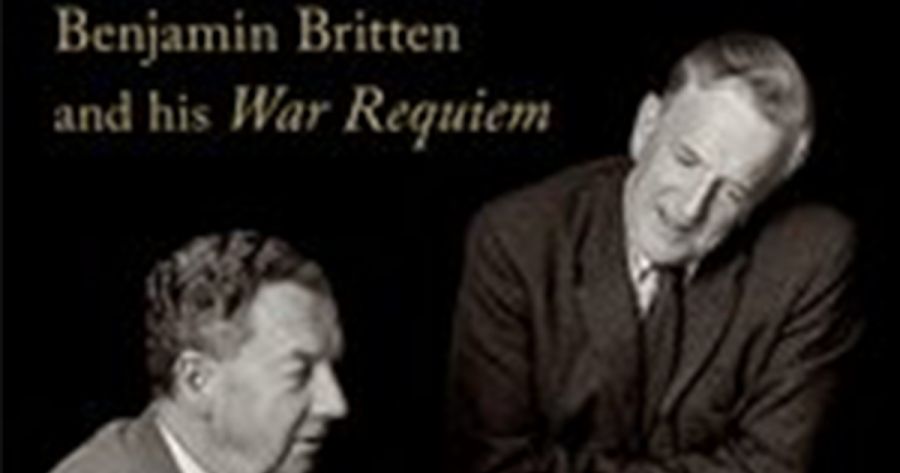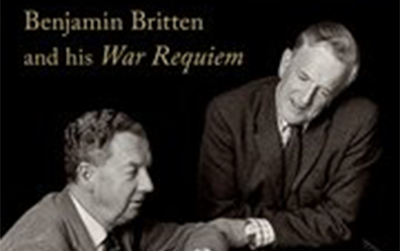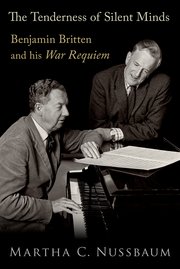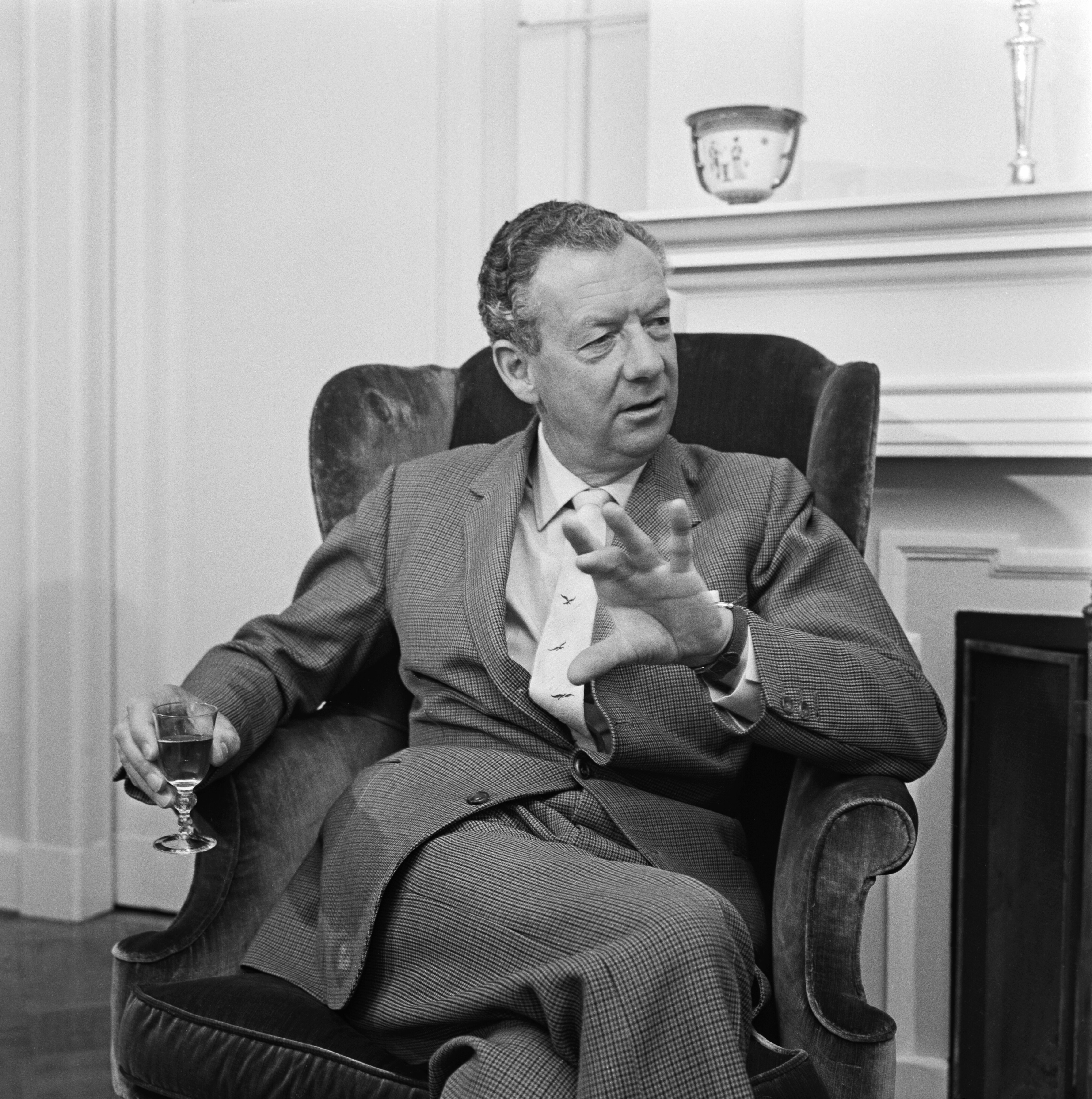
- Free Article: No
- Contents Category: Music
- Review Article: Yes
- Article Title: Behind the masterpiece
- Article Subtitle: The philosophy of a requiem
- Online Only: No
- Custom Highlight Text:
Of Gustav Mahler’s numerous military sorties, ‘Wo die schönen Trompeten blasen’, a miniature from Des Knaben Wunderhorn, is surely the most affecting. It is the eve of battle, and a young woman is visited by her lover, distant trumpet fanfares and dull drumbeats in the air. But perhaps the lover is already dead and it is his spirit she encounters – or it is a premonition of what the morrow will bring. Regardless, Mahler evokes a mixture of tenderness and gloomy foreboding as the young soldier tells his lover that he is going to the green heath far away. ‘There where the splendid trumpets sound / There is my home of green turf.’
- Featured Image (400px * 250px):

- Alt Tag (Featured Image): Paul Kildea reviews ‘The Tenderness of Silent Minds: Benjamin Britten and his War Requiem’ by Martha C. Nussbaum
- Book 1 Title: The Tenderness of Silent Minds
- Book 1 Subtitle: Benjamin Britten and his War Requiem
- Book 1 Biblio: Oxford University Press, £19.99 hb, 295 pp
- Book 1 Cover Small (400 x 600):

- Book 1 Cover (800 x 1200):

- Book 1 Readings Link: https://www.readings.com.au/product/9780197568538/the-tenderness-of-silent-minds--martha-c-nussbaum--2024--9780197568538#rac:jokjjzr6ly9m
Mahler’s song does not make an appearance in this very fine book by the American philosopher Martha C. Nussbaum, though different Mahler works do. It is a surprising omission, in part because of the song’s evident textural influence on Benjamin Britten’s setting of Wilfred Owen’s ‘Strange Meeting’ at the end of his War Requiem – the lovely, still moment in which the ghosts of enemy soldiers meet and talk, this same Mahlerian sense of tenderness and resignation prevailing. In part, it is because Nussbaum, in her striking narrative, leaves few stones unturned.
What she reveals in the process is a brilliant philosophical backdrop to one of the twentieth century’s masterpieces: Britten’s War Requiem of 1962. Nussbaum mines Britten works as different as Our Hunting Fathers, Paul Bunyan, and the Seven Sonnets of Michelangelo to discuss otherness, homophobia, anti-Semitism, pacifism, prurience, and the ‘beauty and nobility of human love’. In so doing, she moves painstakingly towards her target: the composition and then première of Britten’s requiem in Coventry’s new cathedral.
 Benjamin Britten, 1965 (Finnish Heritage Agency via Wikimedia Commons)
Benjamin Britten, 1965 (Finnish Heritage Agency via Wikimedia Commons)
Nussbaum is particularly good on how the peace movement in the 1950s overlapped with the campaign for the decriminalisation of homosexual behaviour, and how Britten and his lover, Peter Pears, had a foot firmly in each of these camps. She is clear-eyed on different types of pacifism, though critical of the ‘emotional pacifism’ category she ascribes to Britten. ‘To me, the position of Britten and Pears about World War II is deeply flawed and is itself a form of appeasement.’ I don’t agree with this, since both men were granted exemptions as conscientious objectors, satisfying government criteria at the time that recognised the complexity of personal beliefs. Additionally, as part of their CO status, both men performed throughout England during the war on behalf of the Council for the Encouragement of Music and the Arts, all parties cognisant of the vital role the arts played in maintaining public morale. Yet Nussbaum is steeped in both her considerable scholarship and personal conviction, and must be allowed her conclusion.
Nussbaum is less convincing on Britten’s relationship with women – in real life and in the many dramatic works the composer wrote over thirty years. She ascribes proto-feminist sensibility to Britten in his settings of poetry by Owen and W.H. Auden (she really hates Auden) – weeding out the identified misogynism – which was not always intentionally the case. Britten’s editing of poetry was instinctive, surgical, though sometimes more like that of a ship’s doctor, where quick decisions were made in sometimes pressing circumstances.
It is true that Britten worked well and closely with Imogen Holst and her successor, the remarkable Rosamund Strode, yet both women knew the limits of their authority and the requirements of their position as helpmeets to the boy genius. Holst eventually broke free of the creative yet ultimately constrictive environment in which she worked, even if it was in service to yet another man – her late father, the composer Gustav Holst – rather than to her own towering talent. And though Elizabeth I (Gloriana) and Phaedra are complex, brilliant monsters, other female characters – from Ellen Orford to the various women in the village of Loxford in Albert Herring – are pretty thin. In Billy Budd, Death in Venice, and the three Church Parables, women are invisible; in the case of Curlew River, the principal female character is played by a man.
Nussbaum is at times a little snippy about my 2013 biography of Britten, so in the spirit of scholarly fraternity let me return the favour. Suffolk is in East Anglia, not the Midlands. The number of British conscientious objectors during World War II is tricky, yet recent scholarship suggests 60,000, which would leave Britten as one of five per cent of COs granted unconditional exemption, not six, as I wrote. Tyco, the title character of a planned yet unwritten children’s opera (1952), is a Vegan, not a vegan. Nussbaum cites Britten’s setting of an Auden poem from 1933 in his Spring Symphony (1949) – which begins, ‘Out on the lawn I lie in bed, / Vega conspicuous overhead’ – yet fails to draw the connection, penning instead some lovely pages on veganism in the twentieth century; on Gandhi’s attitude to eating meat; on Pears’s love of steak tartare and Britten’s dislike of vegetable curry. ‘But we have no information about who Tyco was or why he was a vegan.’ Well, quite.
Although it pains me to have to armour up once more, Nussbaum is simply wrong on the cause of Britten’s heart disease. ‘Kildea’s speculation that he had contracted syphilis from Pears … has been thoroughly refuted by medical specialists who say that before his surgery he was thoroughly screened for syphilis and tested negative.’ In Nussbaum’s corner is the general practitioner who performed a syphilis test on Britten, as one would as a matter of course in the lead-up to heart surgery, which proved negative (there are many clinical reasons for a false negative); and the cardiologist who undertook Britten’s pre-operative tests. In my corner are Britten’s distinguished heart surgeon, Mr Donald Ross; his wife, Barbara Ross, herself her husband’s former surgical nurse; the Senior Registrar of a major London hospital; and Dr Basil Reeve, Britten’s childhood friend and confidant of the eminent cardiologist Hywel Davies, who was a close friend of Donald and Barbara Ross.
In his eighties, Davies spoke to me about the conversations he had had with Ross in the late 1980s on the subject of Britten’s operation – writing about this in the New Statesman once my book was published and the storms were swirling – and how in surgery Ross had found abnormalities in Britten’s heart that did not align with the pre-operative tests or long-held assumptions of childhood heart disease, causing Ross to order a biopsy and make his subsequent conclusion. The sheer weight of these sources and the tragic repercussions of this flawed operation on Britten’s final three years are the reasons I included this information in my biography. No amount of wishing it away (there was a lot of this in 2013) changes what Ross discovered.
Nonetheless, this is next-generation Britten scholarship, and from a seventy-seven-year-old, no less. We have moved beyond the documentation that obsessed one of Nussbaum’s heroes, Donald Mitchell; beyond the role of sexuality in Britten’s work (Philip Brett and Humphrey Carpenter); even farther along the road from the need for a deeper social and economic underpinning to biographical studies of musicians (me), to arrive at something remarkably rich and rewarding.


Comments powered by CComment